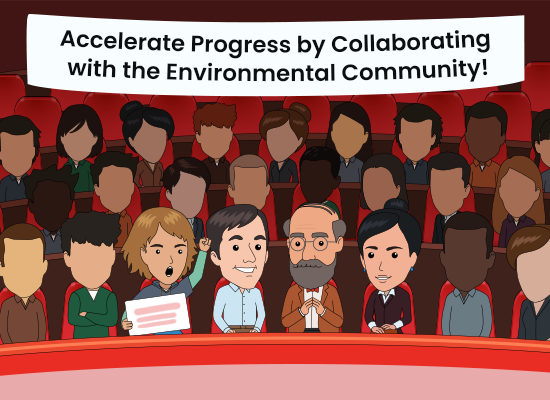The Investment Worth Making
There’s remarkable momentum when it comes to business getting involved in tackling environmental issues. It, therefore, feels like an opportune moment to step back and assess where we are and how we got here. Environmentalists are good at many things, but taking a victory lap usually isn’t one of them. We’re so focused on addressing the enormous challenges ahead, we sometimes forget to consider how far we’ve come. For private sector-led environmental problem solving, I have two key takeaways. One is about how we’ve made so much progress and the other is about how we can make even more.
Looking back, it’s clear that we have helped open the eyes of the business world to the climate crisis and other environmental challenges. Even better, most business leaders now understand that there is significant upside in addressing these challenges and real downside to sitting this out.
What got us here?
I’d say one big reason for our advancement is the diversity of players now in the game. In addition to the business leaders themselves, the roster of key players includes:
- “Centrist” NGOs who work closely with businesses on developing environmental strategies
- “Campaigning” NGOs who criticize and target businesses who are off course, often chasing them into constructive projects with centrist NGOs
- Coalitions of NGOs, academics, regulators, multilaterals, and private sector players bring the environmental community together on specific projects. Examples include the Science-Based Targets Initiative, the Taskforce on Scaling Voluntary Carbon Markets [Disclosure: I’m a member], and the World Business Council for Sustainable Development
- Stakeholders—customers, employees, shareholders, community members—who more than ever before use their agency, speak up loudly, and push hard for progressive environmental action
- Journalists who monitor and write about environmental concerns and shine a spotlight on both leaders and laggards
- Academics who study the issues and data carefully in order to evaluate which actions really work
- Environmental critics whose scrutiny draws attention to real shortcomings and helps ensure they will be addressed
- Private sector consultants who are now getting in the ring to help companies improve on their execution of large environmental initiatives
The diversity of these constituents is a real advantage and offers clues on how we can continue to do better. Looking ahead, we should work to keep this broad coalition strong.
Of course, our big challenge remains the same—how do we build on our past achievements in order to get to scale in the fastest and most impactful way? After all, we do have a crisis on our hands.
